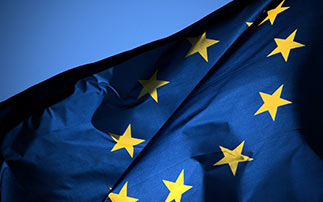Last week, the European Commission approved the Partnership Agreement with Poland and Greece in the field of the European Structural and Investments Funds (ESI Funds). At the beginning of the month, Denmark and then Germany were the first of the 28 Member States to obtain confirmation from the Commission. But what is a partnership agreement?
First, as a reminder, the “European Structural and Investment Funds” (ESIF) include the European Regional Development Fund (ERDF), the European Social Fund (ESF), the European Maritime and Fisheries Fund (EMFF), the European Agricultural Fund for Rural Development (EAFRD) and the Cohesion Fund (to which all Member States are not eligible).
Background
In December 2013, the European Commission decided to introduce common rules for all these ESI funds in the framework of the new programming period. The objective is to achieve a more efficient implementation of these funds by making them more accessible to project managers and improving their coordination. Indeed, for 2007-2013 at the European level, the Community Strategic Guidelines (CSG) were set up in a differently way according to the fund: there were specific guidelines, on one hand, for the ERDF and the ESF and on the other hand for the EAFRD. The EFF (European Fisheries Fund, the predecessor of the EMFF) had any Community Strategic Guidelines. These CSG, corresponding to the priorities to be followed, were then declined and adapted in national strategic reference frameworks in each Member State (for ERDF and ESF) and in national strategic plans for the EAFRD and EMFF. However, the problem with this system was the lack of coordination of these programmes. That is why, for 2014-2020, the European Commission decided to adopt at the European level a common framework for these five funds: it is the Common Strategic Framework (CSC). It aims to complete the EU regulations by providing overall strategic guidance on areas to be covered by the funds, their coordination and their relationship with the other tools of EU funding system.
At the national level, each Member State shall, on the basis of the Common Strategic Framework, develop a strategy for an optimal use of the ESI grants: this is the Partnership Agreement. Within this document, each Member State decides priorities and investment objectives for the next seven years, contributing to the objectives of the Europe 2020 strategy, namely a sustainable, inclusive and smart growth.
Stages
The Reflection concerning the partnership agreements began in 2002 when the European Commission established a set of recommendations for each Member State. After that, a consultation, involving all national actors, (representatives of interest groups, civil society and local and regional representatives) took place. The idea was to make sure to have all points of view to establish the most effective investment strategy meeting the needs of territories and populations. Then, negotiations were again held with the Commission to ensure coherence of objectives targeted with the Europe 2020 priorities.
Member States had until April 22 to submit their partnership agreement with the European Commission. Once the deposit is made, the latter has four months to validate the document. During the first three months, the Commission may make comments to the Member State, which are negotiated during the last month between the two parties. Indeed, the Commission reserves the right not to accept a partnership agreement if these recommendations are not taken into account by Member States. Currently, four countries have seen their partnership agreement be validated.
And after?
This step is important because without it, the Operational Programmes (OPs) cannot be implemented. These documents specify the priorities and investment objectives of the Partnership Agreements. Again, all levels of governance, including civil society, should be asked to develop and implement the OPs. They are also negotiated with the European Commission. They can cover entire Member States and/or regions, or be cooperation programmes involving more than one country. Under the new rules, Member States have a maximum of three months to submit their OP from the transmission of the partnership agreement. The Commission then has three months to make observations and 6 months to adopt the OP. Member states need to follow the Commission’s guidelines.
In early May, the Commission announced its intention to focus more on quality than on quantity. The Commission will take the time necessary to validate each partnership agreement to make sure they are as effective as possible.




